By Sean Donegan, President and CEO, Satelytics, Inc. and Troy Ross, EVP of Operations, ACRT Services
*Editorial Note: The following article appeared in the November/December 2021 issue of the UAA Newsline.
Infrastructure of the power utility industry presents a unique set of challenges. With tens of thousands of miles of transmission and distribution lines and towers, utilities and vegetation management (VM) companies face the mammoth task of inspecting and keeping these corridors clear of potential hazards. As a result, corridors are inspected and maintained on infrequent cycles spanning years—plenty of time for an accident to occur, especially in heavily forested and remote locations.
While this sounds like a tall order, quality utility vegetation management (UVM) along corridors is becoming more achievable with the aid of new and expanding technologies. Corridors can be monitored routinely without having to deploy crews into unknown dangers, thereby mitigating risk and cutting back on remediation costs.
Searching for a Matchstick in a Haystack
Unlike in urban settings, utility companies cannot rely on customers to spot and report encroachments on powerlines in the vast, uninhabited forested locales of transmission lines and towers. It is often up to crews in the field to find, document, and report faulty equipment, vegetation encroachments, and changes in vegetation health and growth that should be monitored closely. Overall, this process is hazardous, time-consuming, and has the potential for human error.
Likewise, flyovers present similar shortcomings—whether employing a fixed-wing aircraft or a helicopter. Many find drones to be a safer alternative, keeping operators on the ground. Unfortunately, this technology still has its drawbacks. As with ground crews and traditional aerial surveys, drones are limited in the area they can cover in a timely manner, making them impractical for surveying geographically dispersed assets. The large amounts of imagery and data that drones collect also take time to analyze and send to utilities—typically weeks or months. By the time results are ready, the data is already outdated and unable to address the current needs of the organization.
Other methods of remote sensing are being embraced by utilities for UVM. LiDAR (Light Detection and Ranging) is a method where lasers are used to measure distances to surfaces. With this information, computers generate 3-dimensional mapping of various surface characteristics. The data produced by LiDAR can show vegetation growth and decline, aid in determining canopy height, and serve as a tool in identifying plant and insect species. LiDAR is currently a tool of choice for UVM, however, it has several crucial limitations.
The most common platforms for LiDAR are fixed-wing aircraft and helicopters, both of which require human employment. Additionally, the time required to process and analyze LiDAR data is extensive. Processing does not end with the collected data reaching its intended client, either. Large data files—including point mapping—must be sifted through and interpreted. So, even after waiting months for information, answers about next steps are not straightforward.
While these remote-sensing methods may seem like a step in the right direction for the UVM industry, they lack the speed and efficiency to help prevent accidents and disasters in utility corridors. By the time a tree leaning toward powerlines has images captured, its coordinates and height determined, and maintenance is scheduled, the tree could have fallen onto those lines and knocked out power or sparked a major fire before UVM crews could ever reach the tree. Disasters have happened in the UVM world when data did not make it to the right hands in a timely manner.
Not Out of the Woods Yet
The challenges don’t end once areas in need of maintenance are identified. Problem spots must be tagged and documented before remediation planning. Photos and GPS coordinates are recorded by UVM crews and uploaded to their platform of choice for the utility client to view. If that platform is not well integrated, information retrieval becomes an unnecessary hurdle for utilities and the information, presenting additional roadblocks to remediation.
On the other end of remediation, similar issues occur when documenting remedial actions, making important information inaccurate or inaccessible. Further, with the transmission of large volumes of documentation detailing work completed (and not completed), utilities are presented with an overwhelming amount of information to catalog and digest. With such mass quantities of data, it is easy to miss vital details. It also can lead to data misinterpretation and general misunderstanding.
Geospatial Analytics Reveals Actionable Information
With so many barriers for efficient, timely data capture and risk mitigation for utilities, how can the power-generation industry and its utility partners ever hope to make meaningful progress? One solution already in use in several utilities across the country is geospatial analytics—a method for capturing and analyzing the imagery utilities and their partners need to make more informed and proactive decisions.
The most common image-capturing platforms employed in geospatial analytics are satellites, which reduce the risks of sending employees to the field to obtain data. Visible light and other portions of the electromagnetic spectrum from the sun are reflected off objects and constituents on earth to a satellite or other image-capturing platform. These spaceborne and aerial sensors collect multispectral and hyperspectral data, imagery consisting of petabytes of data. These sensors detect specific bands—or parts—of the electromagnetic spectrum. Combinations of these bands make up spectral signatures, which are like special DNA or unique fingerprints for objects and phenomena.
All of this data and imagery is analyzed within hours of data capture, run through artificial-intelligence-powered algorithms (utilizing flavors of AI called machine learning and convolutional neural networks). Many complex algorithms can be run at the same time, isolating spectral signatures within the pixels of captured images. Detection algorithms then render this data into interactive displays, visualizations, and even alerts for easy and simple digestion.
With this mix of science and technology, algorithms can detect and often quantify specific constituents, as well as observe changes in conditions and encroachments. From satellite imagery, vegetation speciation can be ascertained, and tree height can be measured and assessed, along with density. Geospatial analytics also makes remote land use classification possible, in addition to measuring land movement and identifying encroachments and corridor changes. All of this can be achieved simultaneously from a single set of data in a timely manner and without human error or safety risks.
Empowering Utility Vegetation Management
Utilizing geospatial analytics in UVM efforts helps mitigate safety hazards, reduce risk, and narrow and identify work zones faster. Crews are immediately directed to problem spots, regardless of the size of the area of interest (AOI) being monitored. Field crews do not need to search for the proverbial needle in the haystack. Instead, crews are deployed only to specific problem spots when their expertise is needed to address the problem. Thus, these crews are prepared for specific conditions and can be further kept out of harm’s way. Vegetation concerns are investigated quicker, preventing or minimizing more disastrous events—such as forest fires —and restoring services more quickly after an event.
The documentation process is equally streamlined, with prompt alerts and comprehensive maps and details. The data included in the documentation is the specific problem, location, and magnitude, along with additional qualitative information. Raw imagery, maps, charts, and graphs can be viewed. Audit trail information can be recorded. Past data and imagery are available and can be compared with current data and side-by-side dual maps. This comparison feature allows the progress of remediation efforts to be checked, tracked, and confirmed, all while having records of every stage along the way.
Geospatial analytics continues to give customers advantages long after remediation. The documentation process of geospatial analytics is certainly beneficial to work performed by UVM crews, but it also is an asset to those in the company who handle insurance, regulation, and litigation inquiries. An ongoing audit trail provides valuable proof that potential threats are being remedied before they become disasters. Insurers offer lower premiums when advanced technology like this demonstrates reduced risk. If utilities find themselves being questioned by regulators or facing legal repercussions, they will have dated, documented proof of actions taken and their effects.
With recent events, increased industry regulation, and even the pandemic necessitating greater and faster insights into VM programs, ACRT Services and Satelytics, Inc. have partnered to explore geospatial analytics for the utility industry. Already in use at several organizations across the country, geospatial analytics have been helping to make UVM efforts more proactive, enhancing their visibility and ensuring utilities are able to continue delivering uninterrupted electricity, water, and gas. The results are undeniably favorable, and we look forward to reporting more in the future.
Sean Donegan is the President and CEO of Satelytics, Inc., a geospatial analytics software company headquartered in Northwest Ohio. Troy Ross is the Executive Vice President of Operations for ACRT Services, an independent UVM consulting firm located in Northeast Ohio.
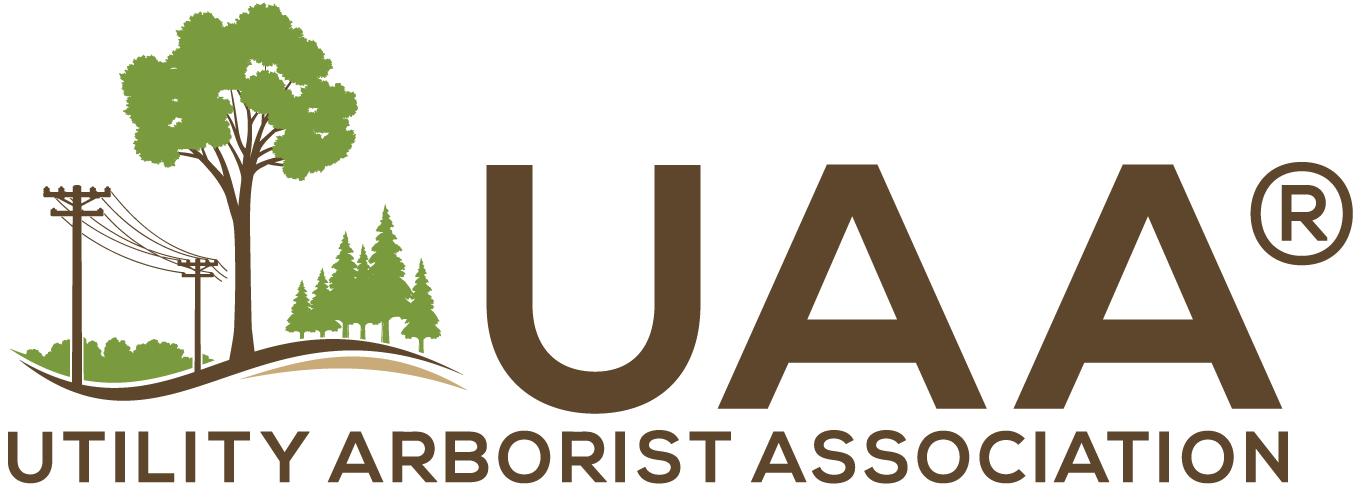
 Cindy is the Senior Director, Vegetation Management Services and she manages departments responsible for maintaining vegetation in REC’s rights-of-way with the goal of reducing exposure of the electric grid to tree caused outages while encouraging habitat and species diversity. Cindy also has a consulting business, EcoAcumen, LLC that focuses on residential, commercial and government clients.
Cindy is the Senior Director, Vegetation Management Services and she manages departments responsible for maintaining vegetation in REC’s rights-of-way with the goal of reducing exposure of the electric grid to tree caused outages while encouraging habitat and species diversity. Cindy also has a consulting business, EcoAcumen, LLC that focuses on residential, commercial and government clients. Kimberly Laing has had an exciting career in the energy industry, gaining valuable experience in various areas for almost 20 years. During her career, she has worked with numerous customers worldwide in a diverse cross-disciplined technical environment. She has extensive experience working with utilities, asset owners, equipment manufacturers, and consultants to facilitate transmission and distribution projects. Kimberly is particularly passionate about Utility Vegetation Management and its vital role in delivering safe and reliable power.
Kimberly Laing has had an exciting career in the energy industry, gaining valuable experience in various areas for almost 20 years. During her career, she has worked with numerous customers worldwide in a diverse cross-disciplined technical environment. She has extensive experience working with utilities, asset owners, equipment manufacturers, and consultants to facilitate transmission and distribution projects. Kimberly is particularly passionate about Utility Vegetation Management and its vital role in delivering safe and reliable power. Josh Beaver is currently senior vice president of Eocene Environmental Group, a utility vegetation management (UVM) consulting and operations firm. Josh has more than two decades of experience within the UVM industry. He is currently responsible for relationship management and oversight of long-term UVM contracts throughout the United States and Canada. He considers customer and community communication to be vital aspects of his role, and he has a proven record of success working with utilities.
Josh Beaver is currently senior vice president of Eocene Environmental Group, a utility vegetation management (UVM) consulting and operations firm. Josh has more than two decades of experience within the UVM industry. He is currently responsible for relationship management and oversight of long-term UVM contracts throughout the United States and Canada. He considers customer and community communication to be vital aspects of his role, and he has a proven record of success working with utilities.
 Sam joins the UAA crew with over a decade of non-profit experience behind her. As our Partnership Coordinator, her focused efforts on building relationships with diverse funders will include crafting proposals, cultivating connections, and cohesively earning dedicated sponsors to support the sustainability of UAA substantially and empowering our programs. Well equipped with professional skills which include program development, public speaking, proposal writing, donor relations, working with diverse stakeholders, coalition building, and public-facing service. Sam’s educational background includes a BS in Animal Ecology with a minor in Animal Science, and a MA in Philanthropy and Non-profit Development.
Sam joins the UAA crew with over a decade of non-profit experience behind her. As our Partnership Coordinator, her focused efforts on building relationships with diverse funders will include crafting proposals, cultivating connections, and cohesively earning dedicated sponsors to support the sustainability of UAA substantially and empowering our programs. Well equipped with professional skills which include program development, public speaking, proposal writing, donor relations, working with diverse stakeholders, coalition building, and public-facing service. Sam’s educational background includes a BS in Animal Ecology with a minor in Animal Science, and a MA in Philanthropy and Non-profit Development. Sara Dreiser is a Senior Program Manager with ComEd. She works with a team to oversee ComEd’s routine cycle maintenance and ComEd’s interruption investigation programs. She has been working in the Vegetation Management industry for close to 15 years.
Sara Dreiser is a Senior Program Manager with ComEd. She works with a team to oversee ComEd’s routine cycle maintenance and ComEd’s interruption investigation programs. She has been working in the Vegetation Management industry for close to 15 years.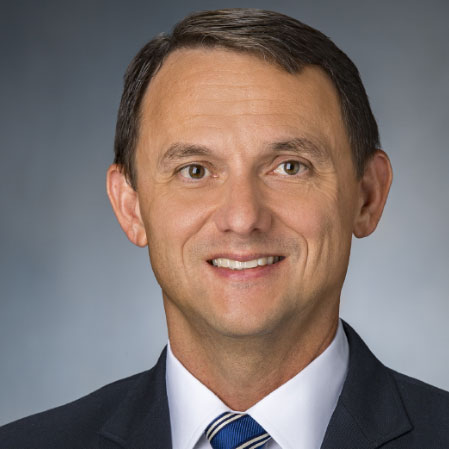 Matt Goff is a Transmission Vegetation Manager at Georgia Power Company. He lives in Brookhaven, GA with his wife, two daughters, and the family’s two dogs Sam, and Payton. For leisure, he enjoys sports with his family, bird hunting, and salt-water fishing.Matt holds a BSFR from the University of Georgia in Forest Resource Management and he graduated in 1997. He has worked in the vegetation management industry for 26 years. His work experience includes six years as a procurement forester for a forest products manufacturer, and 20 years in the utility vegetation management industry with Georgia Power.
Matt Goff is a Transmission Vegetation Manager at Georgia Power Company. He lives in Brookhaven, GA with his wife, two daughters, and the family’s two dogs Sam, and Payton. For leisure, he enjoys sports with his family, bird hunting, and salt-water fishing.Matt holds a BSFR from the University of Georgia in Forest Resource Management and he graduated in 1997. He has worked in the vegetation management industry for 26 years. His work experience includes six years as a procurement forester for a forest products manufacturer, and 20 years in the utility vegetation management industry with Georgia Power. Brandon graduated from Minnesota State University–Mankato with a B.S. in Geography. Brandon has been with Rainbow Tree Company since 2009 and has gained experience in several roles, including Business Developer for our utility products division, GIS Tree Inventory Analyst, and Technical Arborist. Brandon has been the Director of VM Services, the fastest growing division inRainbow Tree Company, since 2012.
Brandon graduated from Minnesota State University–Mankato with a B.S. in Geography. Brandon has been with Rainbow Tree Company since 2009 and has gained experience in several roles, including Business Developer for our utility products division, GIS Tree Inventory Analyst, and Technical Arborist. Brandon has been the Director of VM Services, the fastest growing division inRainbow Tree Company, since 2012. A winner of the David H Nabi Award for dedication and service, Dr. Robert Vanderhoof earned his Ph.D. from the College of Forest Resources at Mississippi State University in 1995. A veteran natural resource manager, Robert spent 15 years as Florida’s Deer Management Section Chief during which time he coordinated range management activities across Florida’s seven-million-acre wildlife management area system.
A winner of the David H Nabi Award for dedication and service, Dr. Robert Vanderhoof earned his Ph.D. from the College of Forest Resources at Mississippi State University in 1995. A veteran natural resource manager, Robert spent 15 years as Florida’s Deer Management Section Chief during which time he coordinated range management activities across Florida’s seven-million-acre wildlife management area system.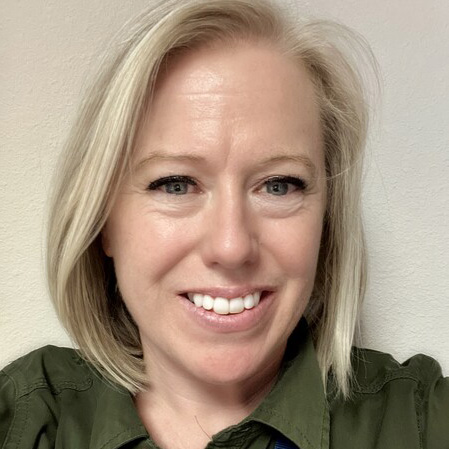 Amanda Opp, Certified Utility Vegetation Management Professional Flathead Electric Cooperative, Integrated Services Manager, University of Wisconsin Stevens Point, Course Facilitator
Amanda Opp, Certified Utility Vegetation Management Professional Flathead Electric Cooperative, Integrated Services Manager, University of Wisconsin Stevens Point, Course Facilitator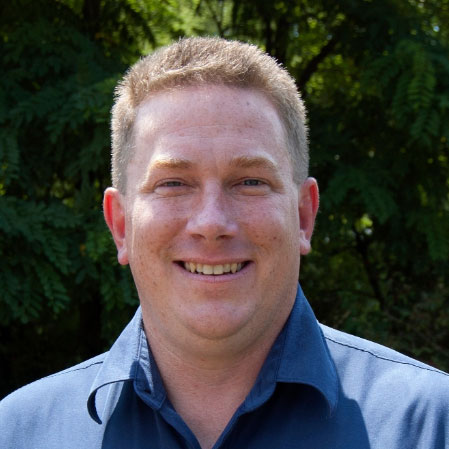 Jim Neeser is a business developer for the Davey Resource Group, a division of the Davey Tree Expert Company. Jim primarily works with utility companies to provide innovative and customized solutions. Jim earned his AA from Vermillion Community College in 1997 and his BS in Forestry with an emphasis on Hydrology and Soils from the University of Minnesota in 2000. Jim is an ISA Certified Arborist with the Utility Specialist endorsement. Jim has been involved in the UAA training committee for nearly a decade as a past chairman and is currently the treasurer and Champion of the finance committee. Jim spent his first 7 years in the industry as a field arborist in the commercial and utility markets. The last 10 years, Jim has been working with utility companies to enhance their Integrated Vegetation Management programs. Jim’s other interests include spending time with his family, sports, hiking, fishing and coin collecting. Jim is also active with the Boy Scouts of America as an Eagle Scout. Jim lives in Forest Lake, MN with his wife and 2 children.
Jim Neeser is a business developer for the Davey Resource Group, a division of the Davey Tree Expert Company. Jim primarily works with utility companies to provide innovative and customized solutions. Jim earned his AA from Vermillion Community College in 1997 and his BS in Forestry with an emphasis on Hydrology and Soils from the University of Minnesota in 2000. Jim is an ISA Certified Arborist with the Utility Specialist endorsement. Jim has been involved in the UAA training committee for nearly a decade as a past chairman and is currently the treasurer and Champion of the finance committee. Jim spent his first 7 years in the industry as a field arborist in the commercial and utility markets. The last 10 years, Jim has been working with utility companies to enhance their Integrated Vegetation Management programs. Jim’s other interests include spending time with his family, sports, hiking, fishing and coin collecting. Jim is also active with the Boy Scouts of America as an Eagle Scout. Jim lives in Forest Lake, MN with his wife and 2 children. Adam’s experience includes leading business development strategies for a utility vegetation management consulting firm, vegetation management field operations at two major investor-owned utilities in the southeastern US, project management at a variety of utilities in the mid-Atlantic and southeastern regions, and vegetation management program development and assessments across the country. His utility arboricultural experience provides a broad understanding of the many different methods used to create a successful utility right-of-way, vegetation management program, including remote sensing, data analytics, optimization, and the utilization of third-party consulting foresters for planning and auditing duties.
Adam’s experience includes leading business development strategies for a utility vegetation management consulting firm, vegetation management field operations at two major investor-owned utilities in the southeastern US, project management at a variety of utilities in the mid-Atlantic and southeastern regions, and vegetation management program development and assessments across the country. His utility arboricultural experience provides a broad understanding of the many different methods used to create a successful utility right-of-way, vegetation management program, including remote sensing, data analytics, optimization, and the utilization of third-party consulting foresters for planning and auditing duties.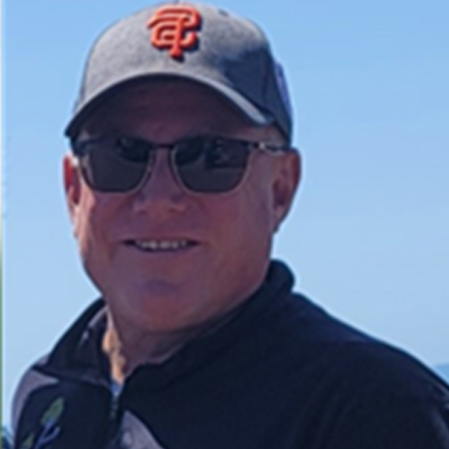 Craig works for Pacific Gas and Electric as a Principal Program Manager in Land Management. His career spans 30 years in the utility industry serving numerous roles. He is an ISA Certified Arborist, Utility Specialist, and hold his TRAQ and is a TCIA Certified TreeCare Safety Professional. Craig has been engaged and involved in the UAA for many years, starting back in 2008. He then wanted more so he ran for UAA President and was elected in 2014. Today, Craig looks back over his 30-year career and wouldn’t change a thing, he’s made life-long friends and considers many as mentors. He also claims he would not be where is in his career if it weren’t for these people, and pledges to pay it forward to support others in their success.
Craig works for Pacific Gas and Electric as a Principal Program Manager in Land Management. His career spans 30 years in the utility industry serving numerous roles. He is an ISA Certified Arborist, Utility Specialist, and hold his TRAQ and is a TCIA Certified TreeCare Safety Professional. Craig has been engaged and involved in the UAA for many years, starting back in 2008. He then wanted more so he ran for UAA President and was elected in 2014. Today, Craig looks back over his 30-year career and wouldn’t change a thing, he’s made life-long friends and considers many as mentors. He also claims he would not be where is in his career if it weren’t for these people, and pledges to pay it forward to support others in their success. Erin Creekmur has been in the UVM industry for over 20 years. After graduating with a Bachelors in Botany from Northern Arizona University she relocated to Northern California to start her professional career. Starting as a consulting utility pre-inspector with Western ECI she quickly moving up to the ranks to Supervisor under the tutelage of folks like Nelson Money. In 2004, Erin joined PG&E as a Quality Assurance Auditor for the VM program. Eventually becoming the Program Manager for the North Coast Division, helping stand up the beginnings of CEMA as the Emergency Drought Response Initiative Lead for the Enhanced Inspection & Mitigation Program, targeting off-cycle hazard trees across the system. In 2015, Erin moved back to her home state of Arizona and took the role of Division Supervisor with Arizona Public Service, managing both transmission and distribution UVM programs out of the Flagstaff area. As part of her role with APS Forestry Fire and Resource Management Department, Erin had responsibility for creating a Hazard Tree Mitigation program. maintaining APS’s ROW Stewardship Accreditation, FERC reporting, and the Transmission Lidar program. In 2021, Erin took a shift in her career and is now Supervising the Customer Construction and Design team for APS, expanding her overall understanding of the Utility industry. Erin continues to maintain her ISA Utility Specialist Certification and TRAQ. She has also completed certifications in both Six Sigma and Lean Sigma Green Belt through accredited universities. In addition to her current service on the UAA Board of Directors, Erin spent the last 6 years as an officer with the Arboretum at Flagstaff Board of Directors. In her free time, you can find Erin in the woods taking pictures of native plants and beautiful western landscapes.
Erin Creekmur has been in the UVM industry for over 20 years. After graduating with a Bachelors in Botany from Northern Arizona University she relocated to Northern California to start her professional career. Starting as a consulting utility pre-inspector with Western ECI she quickly moving up to the ranks to Supervisor under the tutelage of folks like Nelson Money. In 2004, Erin joined PG&E as a Quality Assurance Auditor for the VM program. Eventually becoming the Program Manager for the North Coast Division, helping stand up the beginnings of CEMA as the Emergency Drought Response Initiative Lead for the Enhanced Inspection & Mitigation Program, targeting off-cycle hazard trees across the system. In 2015, Erin moved back to her home state of Arizona and took the role of Division Supervisor with Arizona Public Service, managing both transmission and distribution UVM programs out of the Flagstaff area. As part of her role with APS Forestry Fire and Resource Management Department, Erin had responsibility for creating a Hazard Tree Mitigation program. maintaining APS’s ROW Stewardship Accreditation, FERC reporting, and the Transmission Lidar program. In 2021, Erin took a shift in her career and is now Supervising the Customer Construction and Design team for APS, expanding her overall understanding of the Utility industry. Erin continues to maintain her ISA Utility Specialist Certification and TRAQ. She has also completed certifications in both Six Sigma and Lean Sigma Green Belt through accredited universities. In addition to her current service on the UAA Board of Directors, Erin spent the last 6 years as an officer with the Arboretum at Flagstaff Board of Directors. In her free time, you can find Erin in the woods taking pictures of native plants and beautiful western landscapes. Fallon is a Utility Arborist and Executive Director of the Utility Arborist Association. Prior to his current role he was responsible for leading vegetation management programs across several upper Midwest states on behalf of a large investor-owned utility. He’s also been an adjunct professor at the University of Wisconsin-Stevens Point, where he facilitated the
Fallon is a Utility Arborist and Executive Director of the Utility Arborist Association. Prior to his current role he was responsible for leading vegetation management programs across several upper Midwest states on behalf of a large investor-owned utility. He’s also been an adjunct professor at the University of Wisconsin-Stevens Point, where he facilitated the  Renée is our Member Services Manager. She is available to UAA members for questions on committee assignments, educational opportunities, scholarships, CEU questions, and any other assistance.
Renée is our Member Services Manager. She is available to UAA members for questions on committee assignments, educational opportunities, scholarships, CEU questions, and any other assistance. Diona has been with the Utility Arborist Association (UAA) since December 2015 and has worked in various capacities within the organization.
Diona has been with the Utility Arborist Association (UAA) since December 2015 and has worked in various capacities within the organization.